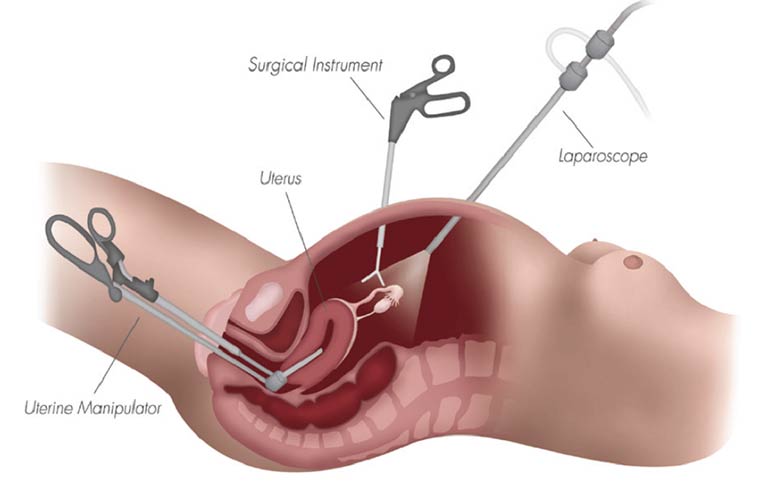
Hysterectomy (Abdominal, Vaginal, Laparoscopic)
Abdominal hysterectomy
An abdominal hysterectomy is a surgical procedure that removes your uterus through a lower abdomen incision. If you're pregnant, your uterus is where the baby develops. In a partial hysterectomy, only the uterus is removed, leaving the cervix intact. During a total hysterectomy, the uterus and cervix are removed.
A total hysterectomy with salpingo-oophorectomy is when one or both ovaries and fallopian tubes are removed during a hysterectomy.
It is also possible to perform a hysterectomy through a vaginal incision or through laparoscopic or robotic surgery in which long, thin instruments are inserted into small abdominal incisions.
A vaginal hysterectomy is a surgical procedure that removes the uterus via the vagina.
In order to remove the uterus, the surgeon separates it from the ovaries, fallopian tubes, and upper vagina, as well as the blood vessels and connective tissue that support it.
In contrast to an abdominal hysterectomy, which requires a lower abdominal incision, a vaginal hysterectomy requires no incisions, is less invasive, costs less, and results in quicker recovery. Your uterus' size and shape, or the reason for your surgery, may prevent a vaginal hysterectomy. In addition to an abdominal hysterectomy, your doctor will discuss other surgical options with you.
The uterus is surgically removed during a hysterectomy. Hysterectomies are done for a variety of reasons. New technological advances have made hysterectomy less uncomfortable, riskier for infection, and quicker to recover from. Currently, there are three surgical approaches to hysterectomies.
- Traditional open hysterectomy: This procedure requires a six to twelve-inch incision in the abdominal wall.
- Hysterectomy vaginal: The uterus is removed through the vaginal canal. This method is superior to the open, traditional hysterectomy, but it still does not provide the surgeon with a complete view of the surrounding organs, including the bladder.
- Total Laparoscopic Radical Hysterectomy with Robotic Assist: Using a cutting-edge robotic platform provides the surgeon with a full view of the surrounding organs as well as more precise control over incisions.
